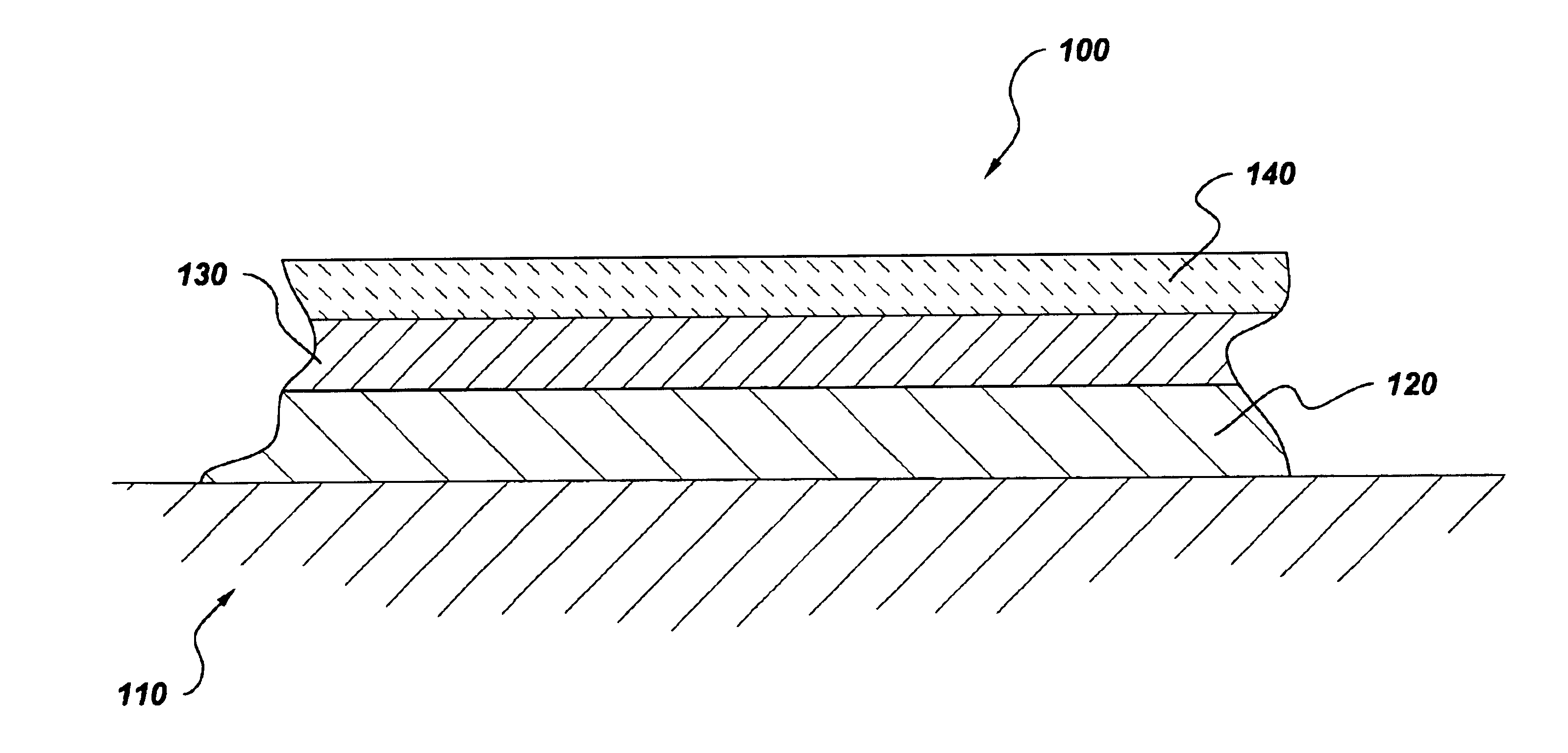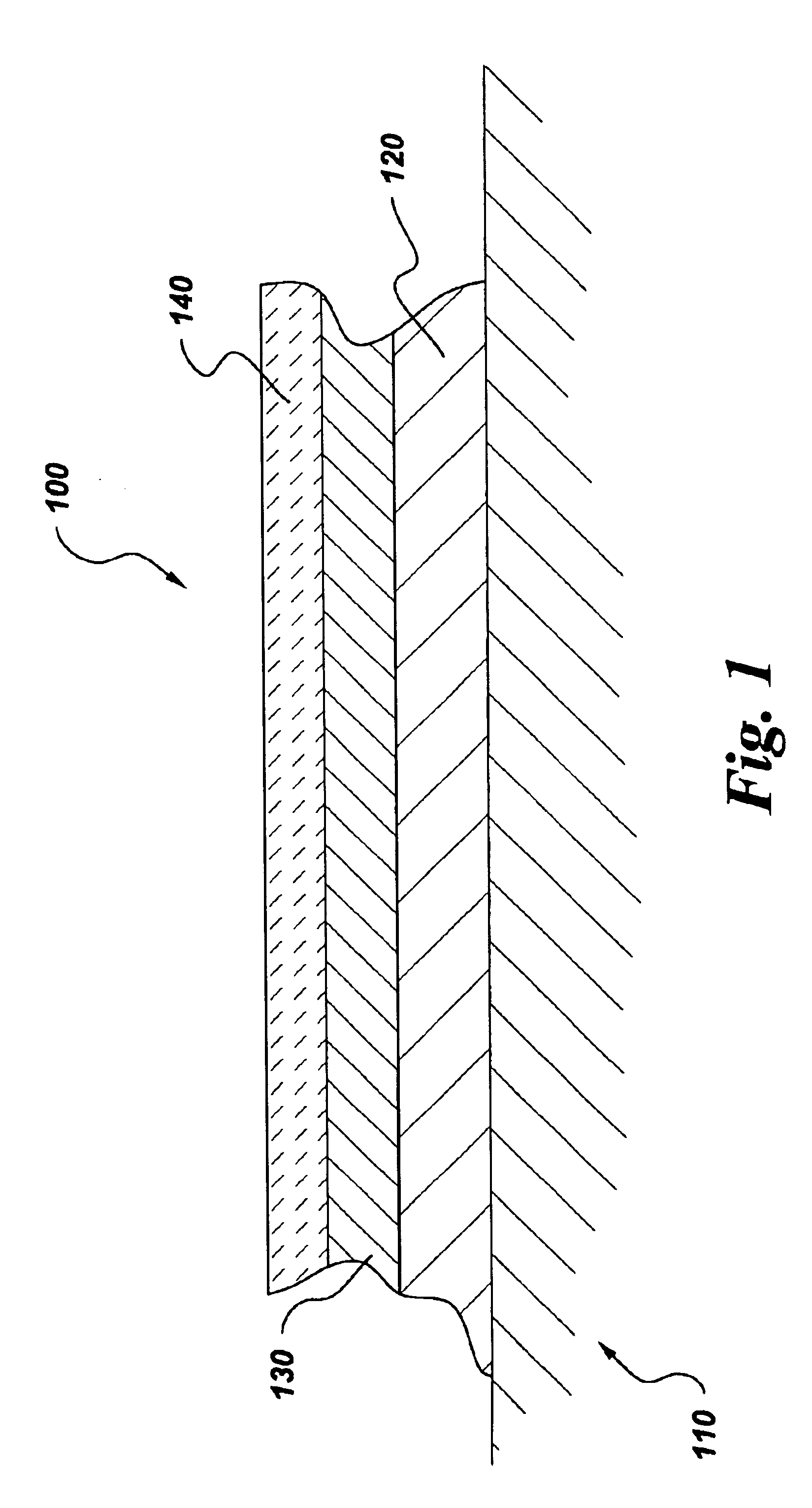Environmental barrier coating
a barrier coating and environmental technology, applied in the direction of chemical vapor deposition coating, liquid fuel engine components, non-positive displacement fluid engines, etc., can solve the problems of unacceptably high recession rate for many component lifetime requirements, unacceptably high recession rate for extended component lifetime requirements
- Summary
- Abstract
- Description
- Claims
- Application Information
AI Technical Summary
Benefits of technology
Problems solved by technology
Method used
Image
Examples
example
Sintered pellets of compositions corresponding to an intermediate coat having a composition in accordance with one aspect of the present invention (tantalum aluminate) and an intermediate coat having a conventional composition (barium strontium aluminosilicate or BSAS) were prepared and tested. These pellets were coated with silicon, such as may be found in an exemplary bond coat, and then exposed to an oxidative high temperature environment as might be experienced in a gas turbine engine, for example. The interface of the pellet and the silicon coating, corresponding to an interface of an intermediate coat and a bond coat, was then analyzed for each of the two pellet compositions.
Tantalum aluminate was prepared from a starting powder mixture of 50 mol % Ta2O5 and 50 mol % Al2O3. Both powders were 99.99% pure and had a −325 mesh particle size. The powders were obtained from Cerac, Inc. of Milwaukee, Wis. The Al2O3 and Ta2O5 powders were mixed with ethanol and zirconia milling media ...
PUM
| Property | Measurement | Unit |
|---|---|---|
| temperatures | aaaaa | aaaaa |
| temperatures | aaaaa | aaaaa |
| thickness | aaaaa | aaaaa |
Abstract
Description
Claims
Application Information
 Login to View More
Login to View More - R&D
- Intellectual Property
- Life Sciences
- Materials
- Tech Scout
- Unparalleled Data Quality
- Higher Quality Content
- 60% Fewer Hallucinations
Browse by: Latest US Patents, China's latest patents, Technical Efficacy Thesaurus, Application Domain, Technology Topic, Popular Technical Reports.
© 2025 PatSnap. All rights reserved.Legal|Privacy policy|Modern Slavery Act Transparency Statement|Sitemap|About US| Contact US: help@patsnap.com



